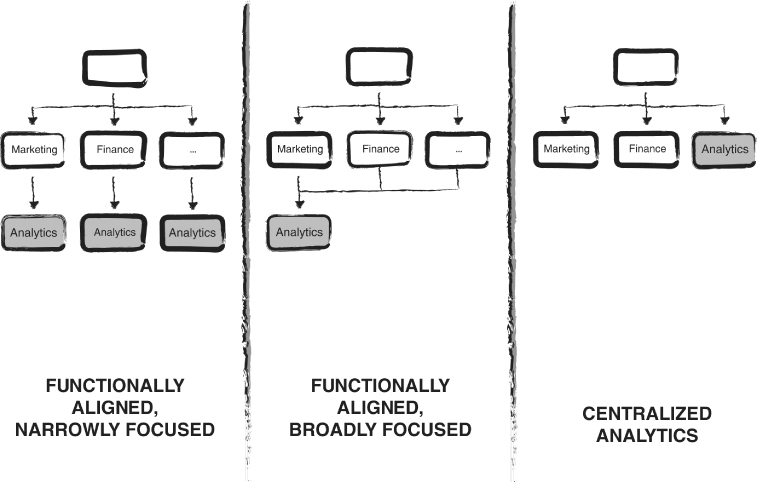COMMON TEAM STRUCTURES
Organizational structures supporting the use of business analytics tend to follow one of three general patterns, described in Figure 3.4. The most common team structure is functionally aligned and narrowly focused. It is normally tasked with meeting a specific vertical requirement within the business, such as identifying fraud or providing market insight. The size of team will often vary, ranging from a few individuals to a large team covering a wide variety of roles and responsibilities. One of the major characteristics of this model is the narrow focus; although the team may have competencies that could be applied elsewhere, it is rare that the team will do so.
Figure 3.4 Team Structures

This structure may evolve over time into one that is functionally aligned and broadly focused. The team will normally report to a single line of business but, due to internal recognition of the value of business analytics, it will also provide support to other lines of business interested in leveraging business analytics within their own processes. The team in this situation tends to be a larger group with a fairly comprehensive set of roles identified.
The most mature structure involves the centralization of business analytics capabilities. The exact nature of this centralization can vary. Common models include:
- Consultancy, where the group is cross-charged for their ...
Get The Value of Business Analytics: Identifying the Path to Profitability now with the O’Reilly learning platform.
O’Reilly members experience books, live events, courses curated by job role, and more from O’Reilly and nearly 200 top publishers.

